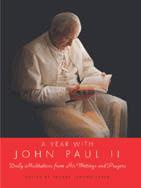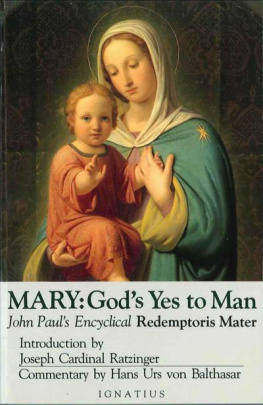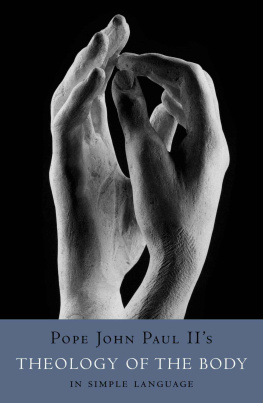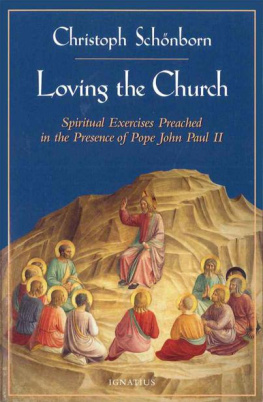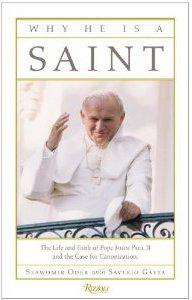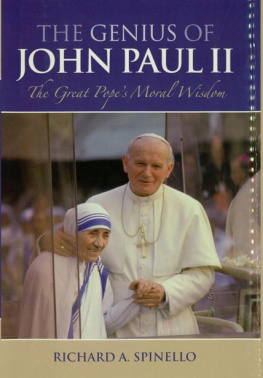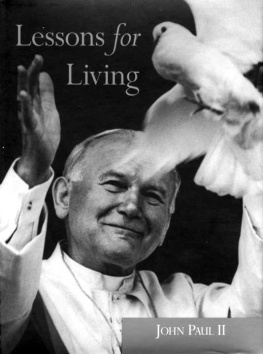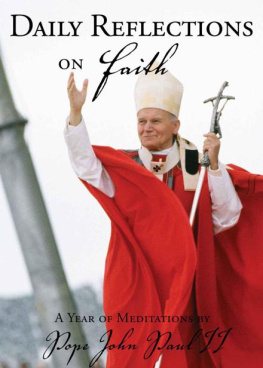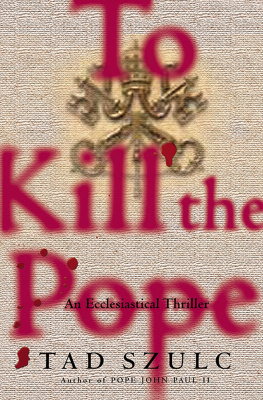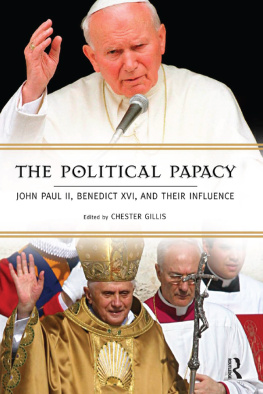Praise for Go in Peace
"What might initially seem to be a conventional collection of devotions has at its heart a truly radical critique of most Western thought since the Enlightenment."
-PHILIP JENKINs, author of The New Faces of Christianity
"To read Go in Peace is like making a retreat with the pope as your spiritual director."
-FR. ANDREW GREELEY, author of The Making of the Pope 2005
"Durepos has performed a valuable service by synthesizing the pope's thoughts in an easy-to-read format that inspires prayer and reflection."
-Publishers Weekly
"Go in Peace distills more than two decades of the teachings of John Paul II-the most important religious figure of the twentieth century."
-SCOTT HAHN, professor of Scripture and theology, Franciscan University of Steubenville
"Go in Peace is the best and most readable one-volume introduction to the writings of Pope John Paul II."
-BERT GHEZZI, author of Voices of the Saints
"Go in Peace is a private audience with Pope John Paul II.... This volume fits the description it will soon earn: a spiritual classic for out time."
-EUGENE KENNEDY, author of The Unhealed Wound
(.CO
~o in geace
A GIFT OF ENDURING LOVE
by
JOHN PAUL II
Edited by Joseph Durepos






Peace is not a utopia, nor an inaccessible ideal, nor an unrealizable dream.... Peace is possible.
-JOHN PAUL 11
Lord, make me an instrument of your peace.
-ST. FRANCIS OF ASSISI
Lord Jesus Christ, you said to your apostles: I leave you peace, my peace I give you.
-RITE OF PEACE FROM THE MASS
eonlenls
........... xi
....... xv
....... 19
............................ 35
................... 53
................ 69
...................... 105
........................ 167
...................... 185
.................. 205
........................ 221
........ 225
........... 231
............................... 240
Introduction to the New Edition:
Images of John Paul II
When we think of Pope John Paul II, a variety of images, many of them quite personal, come into our minds.
My favorite mental picture of him is as a young, vigorous man in a dazzling white cassock emerging from the convention center in Philadelphia in 1979. I was there in the crowd that day, standing on the sidewalk with hundreds of other excited fans. As John Paul greeted the cheers, he turned his head and suddenly caught sight of a long line of young children confined to wheelchairs in front of the nearby Children's Hospital.
The new pope made his way to the children and spent nearly half an hour talking with them, embracing them, and blessing them. I can still see him, intently bending over their heads and gently touching each one of them as they looked up at him-with surprise and a little confusion. As I watched this, I wept-to my own surprise and a little confusion.
In 1979, I was a college student, and not a very religious one. Over the years, as my faith grew stronger and my relationship with the Church deepened, the figure of Pope John Paul II grew more distinct, like a slowly developing photo, taking on greater clarity in my life. I followed his exploits, as most Catholics did, and watched as the images changed: John Paul before throngs in Poland, John Paul with the poor in Africa, John Paul admonishing dictators, John Paul before the Western Wall in Jerusalem. Finally, I saw the bent and trembling John Paul, slowly dying before our sorrowful eyes as he labored through his final years of leading the Church.
Even as the images fade, we can begin to assess his enormous accomplishments. It is impossible in a few paragraphs to sum up the influence of Karol Wojtyla on the Church and the world. Any mere biographical sketch will mention a number of superlatives: the first-ever Polish pope, the first pope to visit a synagogue since the days of the early Church, the most widely traveled pope in history. Even the shortest biography will note how his astonishing involvement with the Solidarity movement in his native Poland helped pave the way for the dismantling of communism in Eastern Europe, then in the Soviet Union, and finally led to the end of the cold war. Any historical summary will point to his voluminous writings, most notably his powerful encyclicals on social justice, which challenge both socialist and capitalist systems to respect the essential dignity of every human person.
Assessments over, we are left with John Paul's words. And that's what you will find in this book: a collection of some of his most meaningful writings, arranged according to the themes he stressed again and again throughout his travels and in his many books, encyclicals, speeches, and letters.
This volume is a window into the marvelous humanity of Pope John Paul II, as well as into his obvious sanctity. As I read it, I was reminded of how arduous his long journey had been. He was a man whose faith was nurtured in the intensely pious atmosphere of early-twentieth-century Polish Catholicism, forged in the terrors of midcentury Nazi and communist regimes, and finally allowed to blossom fully, like a magnificent fruit tree, for the nourishment of the late-century world.
At the end of that journey, some reports said, John Paul's final word was "Amen," as if he had completed one great, long prayer-one that, like all human prayers, was imperfect and personal and incomplete, but always faithful to God.
For me, his most meaningful message wasn't even his own, though he repeated it often enough that many thought it had originated with him. "Be not afraid!" he would say, over and over, echoing the message that Jesus repeated insistently to his disciples and that bracketed his earthly life (at the Annunciation, Gabriel tells Mary not to fear; at the Resurrection, the risen Lord tells his disciples not to fear). When John Paul uttered those words, the world understood that they were hearing from a man who not only believed in fearlessness but also had experienced things that were truly fearful.
On the day that John Paul died, I felt myself back in Philadelphia all those years ago, as a young man standing under the bright sun alongside hundreds of people cheering for Pope John Paul II-cheering for his dedication, cheering for his faithfulness, cheering for his service, and cheering, most of all, for the man who would be a saint.
James Martin, SJ
Editor's Foreword to the
New Edition
I immersed myself in the writings of Pope John Paul II for two reasons. First, like many millions of people, I was simply fascinated by the man. I was transfixed by his public persona. I was awestruck at his accomplishments. I wanted to study the words of one of the most influential public figures of our time.


